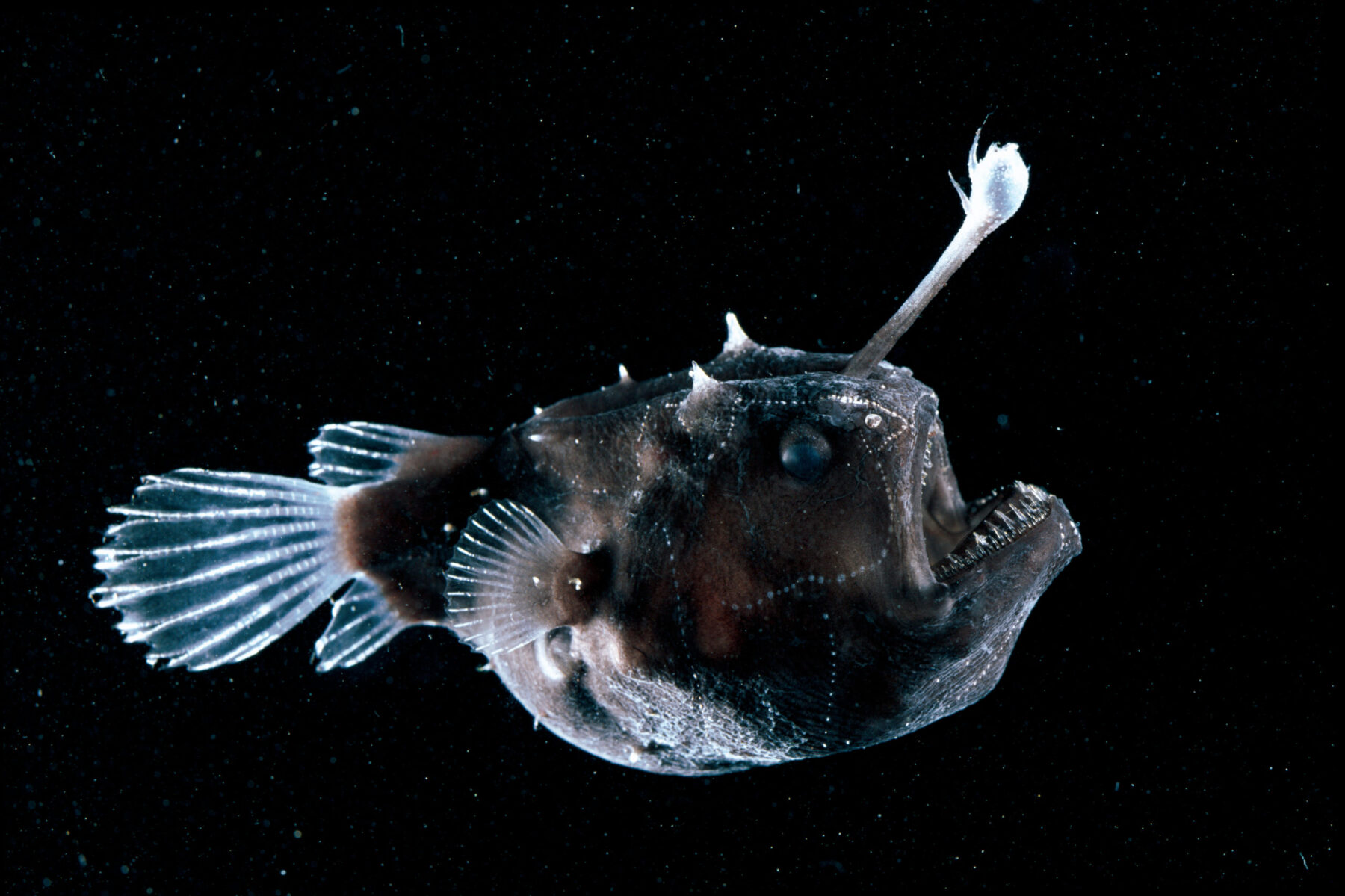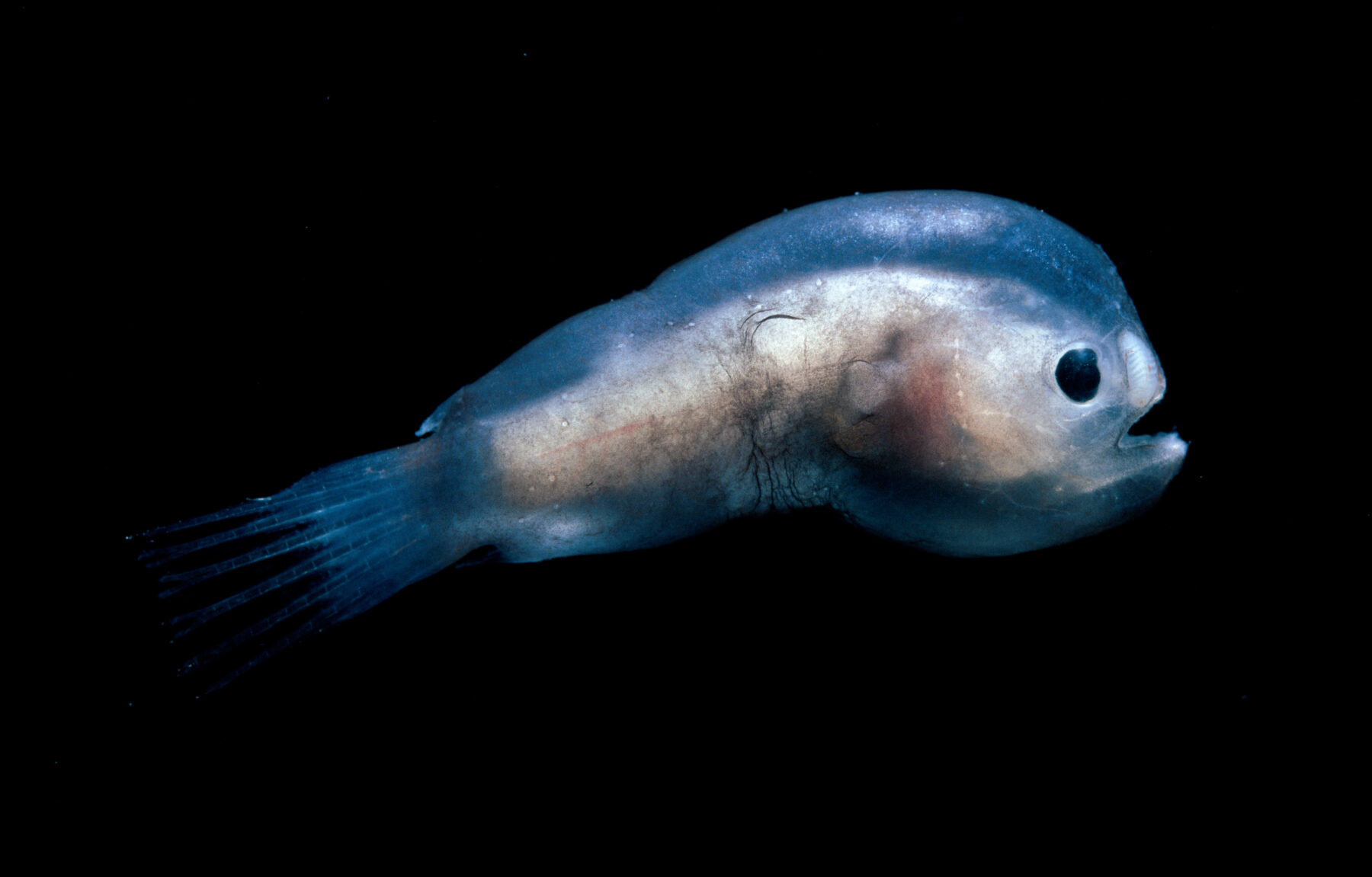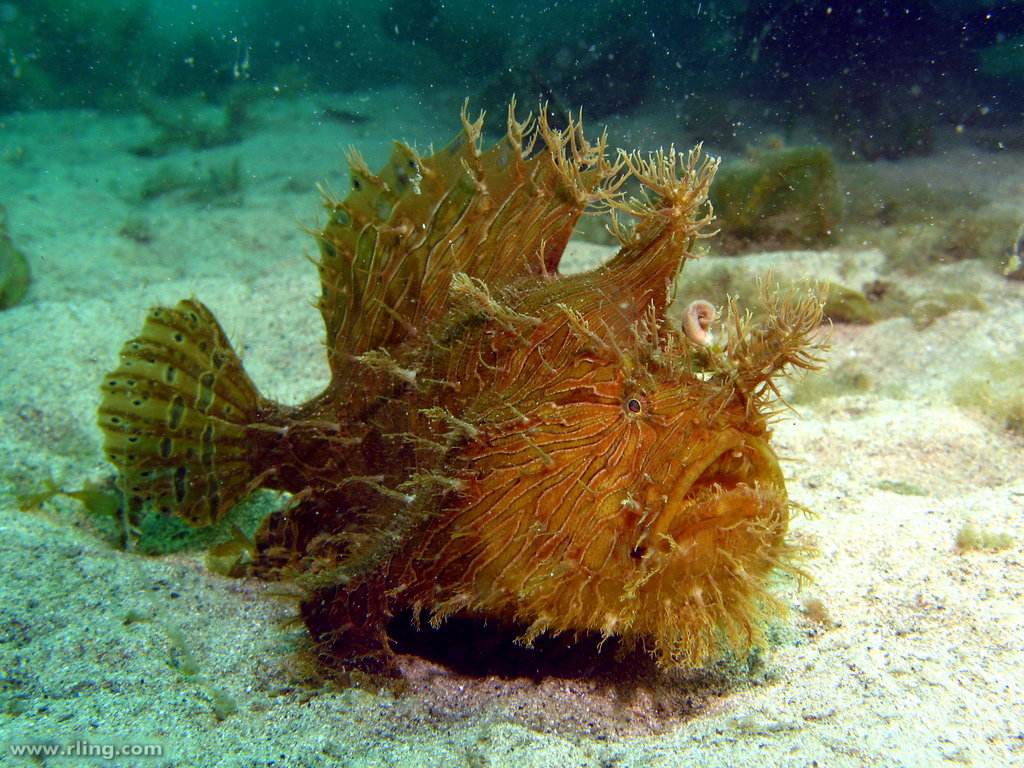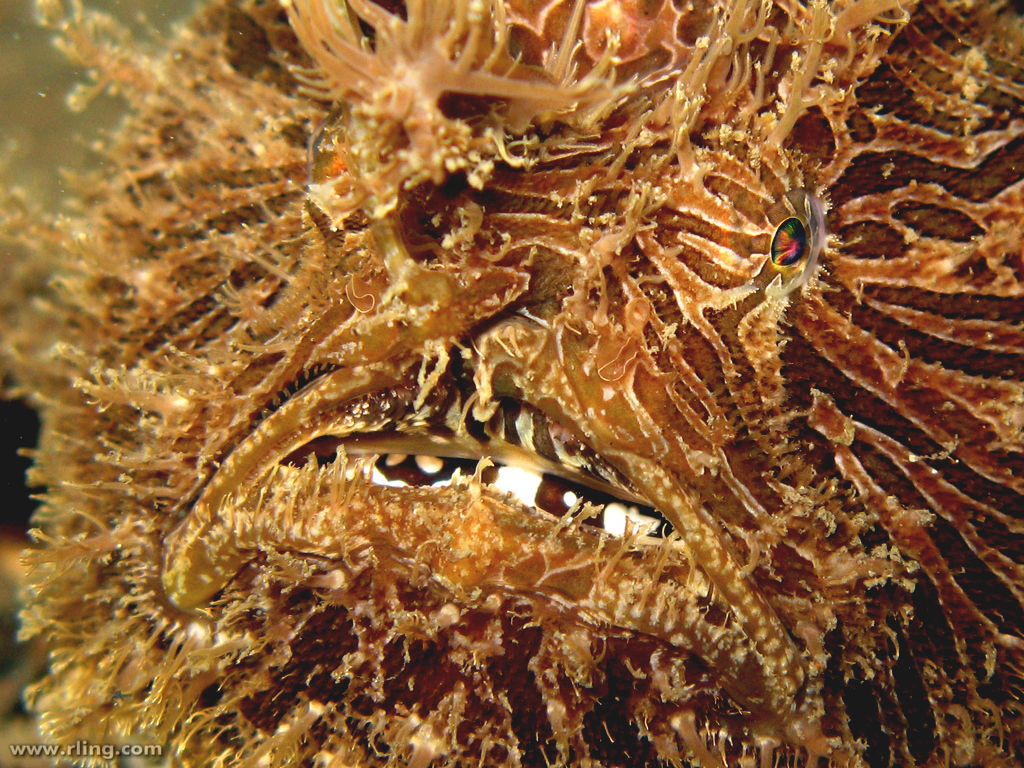The fish with a parasite for a partner

Anglerfish have long been famous for the way they attract prey.
These slow-moving creatures (belonging to the order Lophiiformes) have developed a way to make their food come to them using what is, essentially, a built-in, baited ‘fishing rod’ extending from their foreheads, bringing their food right to the entrance of their mouth.
This ‘fishing rod’ is actually a modified fin, called an illicium. At its tip dangles an esca which acts like a lure, imitating their prey’s favourite foods, such as marine worms or smaller fish.
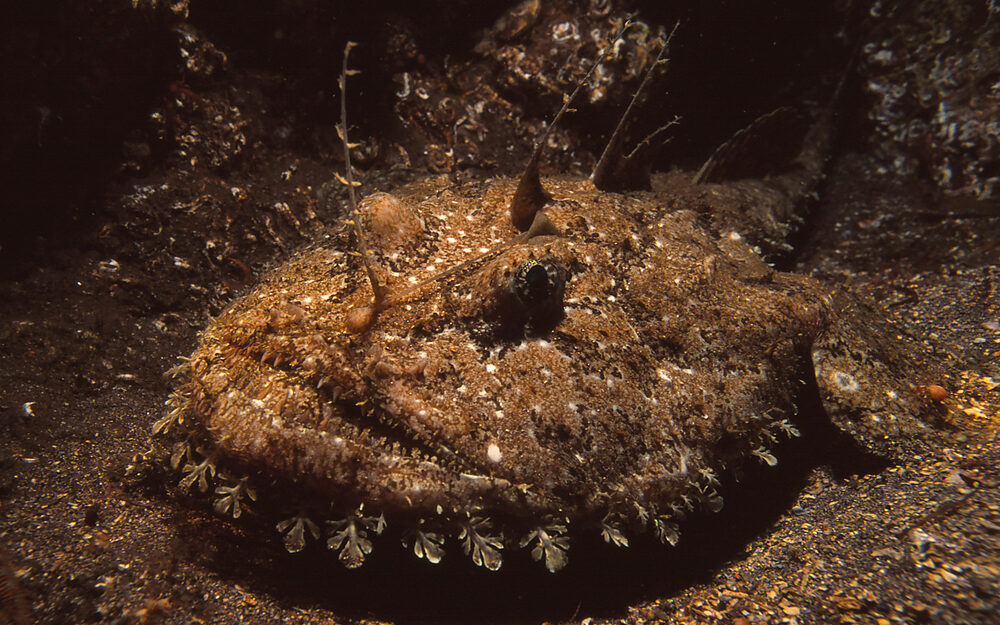
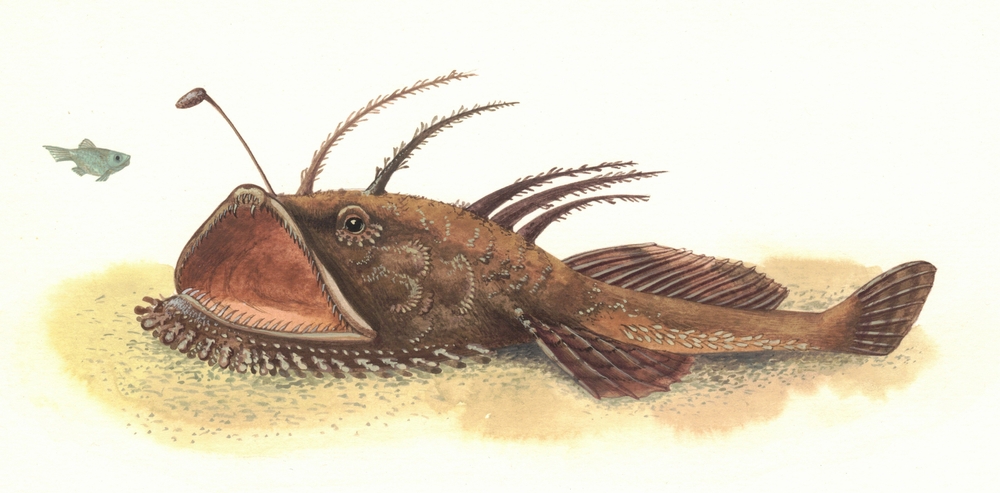
In deep-sea species of anglerfish (suborder Ceratiode) the ‘lure’ even lights up, the glow created by a group of bioluminescent bacteria living symbiotically on the esca.
But when it comes to quirky physiological traits, deep-sea anglerfish have plenty more up their sleeve (um, fins) beyond just having fishing rods coming out of their heads!
American naturalist William Beebe wrote in 1938:
To be driven by impelling odor headlong upon a mate so gigantic, in such immense and forbidding darkness, and willfully to eat a hole in her soft side, to feel the gradually increasing transfusion of her blood through one’s veins, to lose everything that marked one as other than a worm, to become a brainless, senseless thing that was a fish — this is sheer fiction, beyond all belief unless we have seen the proof of it.
Well, what Beebe couldn’t fathom in 1938 was proven by science.
We now know that many deep-sea anglerfish engage in a unique reproduction technique called sexual parasitism.
The males (dwarfed by their female counterparts that average 10 times larger) physically attach themselves to the female. And this isn’t a fleeting attachment. As the Spice Girls once sang “when two become one”, alluding to the act of romantic coitus, in the case of deep-sea anglerfish once they become one they stay that way. Permanently.
It starts with the male biting into the female’s flesh. He hangs on until his skin tissue eventually fuses with hers.
In time, their circulatory systems also connect.
The male, now completely dependant on the female for all of its nutrients, will live and die when the female does.
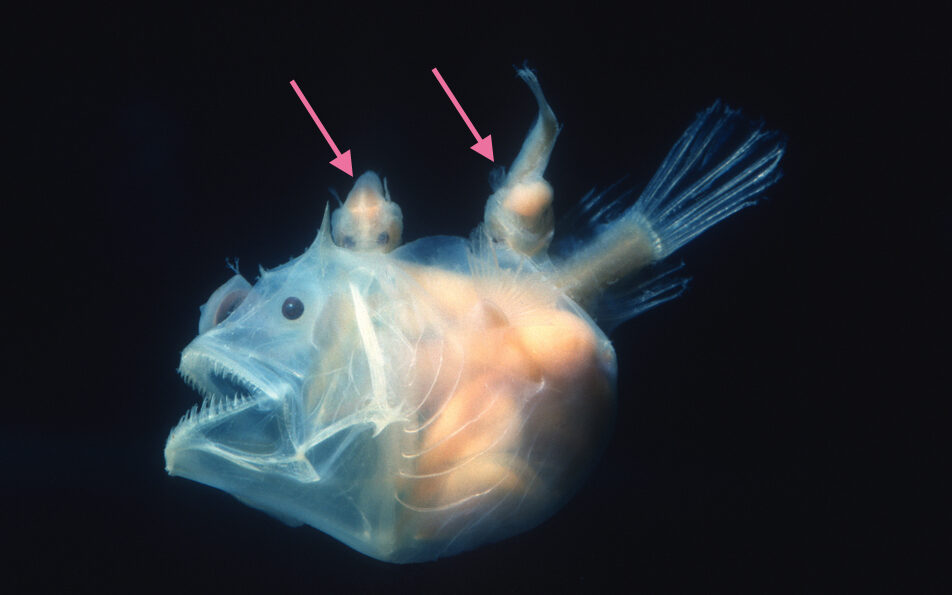
But until then what occurs between the two (now one) is a cycle of repeated reproduction. Or, as Theodore W. Pietsch (from University of Washington’s School of Aquatic and Fishery Sciences) explains in his scientific paper ‘Dimorphism, parasitism, and sex revisited: modes of reproduction among deep-sea ceratioid anglerfishes (Teleostei: Lophiiformes)’, “the host female becomes a kind of self-fertilizing hermaphrodite”.
In some taxa the arrangement is one-to-one, but in others, multiple males will attach to a single female, sometimes up to eight of them.
It’s hard to decide which has it worse – the male, resigned to an inescapable life of reproductive servitude, or the female, forever stuck in the planet’s most clingy relationship.
True anglerfish belong to the order Lophiiformes. Over 200 species of anglerfish have been documented worldwide, with 27 species found in Australia.
Endemic subspecies include the whitespotted anglerfish (Phyllophryne scortea), prickly anglerfish (Echinophryne crassispina), Glover’s anglerfish (Rhycherus gloveri Pietsch) and tasselled anglerfish (Rhycherus filamentosus).
